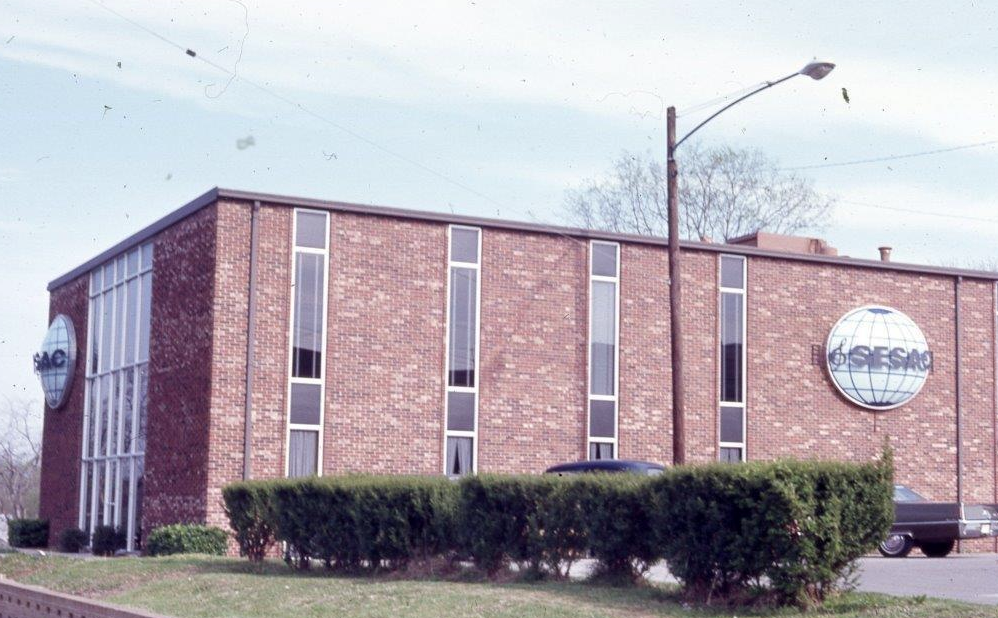

Country Music Hall of Fame in 1973. Photo: MusicRowStories.com
Members of the Nashville music industry gathered Wednesday (Oct. 7) at Nashville’s RCA Studio A to hear and discuss findings from a study documenting the historic significance of hundreds of buildings in the Music Row area. The study indicated that 35 properties in the Music Row area have been demolished in the past two years, and that 10 of those buildings were potentially eligible for inclusion on the National Register of Historic Places.
Researched by the National Trust for Historic Preservation, the study also found that the proximity of the number of music-related businesses gives Nashville the largest concentration of music-related businesses of any city in the nation, including Los Angeles and New York City.
Members of the National Trust for Historic Preservation, Music Industry Coalition, The Metro Planning Department and The Music Row Neighborhood Association worked together to present the findings.
“Our research confirms that Music Row is the only place of its kind remaining in the U.S. where an entire music industry is clustered in one area but that significant demolition pressure exists,” said David J. Brown, executive vice president and chief preservation officer at the National Trust for Historic Preservation. “We believe this study offers strong validation for the thoughtful preservation of Music Row’s heritage and careful planning for its future.”
As the buzz around Nashville continues, the city’s population continues to grow, and the demand for housing, restaurants, hotels, and other amenities rise, so does the value for land in Music City, including the streets that make up Nashville’s famed Music Row area.
The study aimed to determine which buildings hold historical significance in the development of Music Row, including enough significance to warrant inclusion on the National Register of Historic Places.
Led by Carolyn Brackett, Senior Field Officer for the National Trust of Historic Preservation, the study found that 66 buildings meet the eligibility to be nominated for the National Register of Historic Places, a distinction which demands no design or usage restrictions, but symbolizes the property’s national significance and makes the property eligible for certain federal historic tax credits for rehabilitation costs.
The process consists of two phases: documentation/identification, and planning. She stressed that they are still involved in the documentation/identification phase. The process also included gathering oral histories, defining the boundaries of Music Row and identifying a narrative history of important events and the identities of key people who influenced the last 60 years.
They surveyed nearly 400 buildings, to document time periods of construction, architectural traits and to prepare property descriptions, maps and photographs. They also categorized them into nine property types, including recording studios, broadcast studios, union halls, performance venues, housing, publishing houses, multi-purpose buildings, labels, industry services and media buildings, and more. They pored through numerous documents and took 35 oral histories of the area from members of the industry.

Early SESAC Building. The SESAC building was built in 1970 at 11 Music Circle S. It was renovated for Tri Star Sports and Entertainment Group. Photo: MusicRowStories.com
“Music Row Is Still Music Row”
Brackett stated that the survey found there are nearly 200 music-related businesses in the Music Row area, including 49 recording studios, 65 music publishing/media services businesses, four radio broadcast stations, five union halls, nine record label/association headquarters, 11 gathering places/performance venues, 30 professional services offices, and 14 housing facilities.
In January 2015, Music Row (which was originally known as “Record Row”) was named as a National Treasure.
The Plan Going Forward
Doug Sloan,Metro Planning Department deputy director, discussed the next steps in determining the plan for the Music Row area.
Community meetings will be held beginning Oct. 26 at Midtown Precinct from 6 p.m.-7:30 p.m., to get the Music Row community’s involvement in deciding the future of Music Row. Subsequent meetings will be held Nov. 10, Dec. 2, and Jan. 11. A final revision of the report is slated to be presented to the Tennessee State Review board on April 1, 2016.
More information is available at musicrowstories.com. A draft of the full 100+ page report can be viewed here.

16th Ave. S. in 1910. Photo: MusicRowStories.com

Category: Featured
About the Author
Jessica Nicholson serves as the Managing Editor for MusicRow magazine. Her previous music journalism experience includes work with Country Weekly magazine and Contemporary Christian Music (CCM) magazine. She holds a BBA degree in Music Business and Marketing from Belmont University. She welcomes your feedback at jnicholson@musicrow.com.View Author Profile


